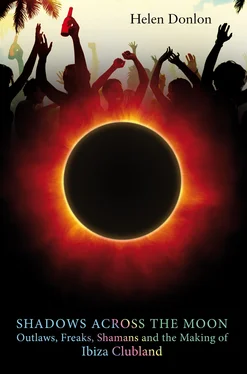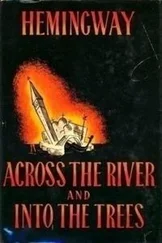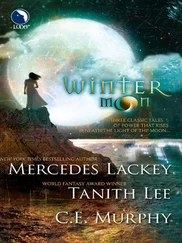After dropping Miquel back at the Ajuntament building by the sea in in Sant Antoni, where he picked up his motorbike and headed off on to his next meeting, I stopped back in at the hotel round the bay where our guests were staying. The hotel, a quiet Ibicencan-run 1970’s style establishment, with a lobby full of potted plants and a traditional dining room offering views of the legendary sunset that could also be seen from Café del Mar around the bay, was almost next door to Sa Punta des Molí, the old mill, now a heritage site, where Walter Benjamin had spent a few months in the 1930’s. It was July 17th, 2013, and the next day Miquel and I, along with our colleagues would be holding a very special event at the small farmhouse style building which was used as a cultural centre, beside the old mill. Nico, the doleful singer with the Velvet Underground, and friend of Andy Warhol, had died at the age of 49, some 25 years earlier on the island, after falling off her bicycle in the afternoon heat, and sustaining eventually fatal head injuries. To mark the 25th anniversary of her premature departure we had put together a multimedia exhibition, and a specially commissioned recital and concert devoted to her memory.
Of all the rock musicians who had an association with an island so bound up in the aura of electronic dance music, Nico was possibly the most well-known. She had been coming to Ibiza since she’d been a young girl, and all throughout the years of her spectacular rise and fall. Starting as a model in Paris for the big fashion magazines, she’d come to the attention of Fellini, who cast her as a glamorous socialite in La Dolce Vita, and she was soon to appear on the cover of Bill Evans’ album Moon Beams. In 1962 she gave birth to Ari, her son by leading French actor Alain Delon, and started a career as a pop singer, before being introduced to Andy Warhol and his Factory scene, and becoming the icy blonde icon and lead singer for the band he sponsored, the Velvet Underground. Dubbed “Pop girl of 1966” she then went on to create several staggeringly innovative solo albums, some produced by Welsh singer/songwriter and Velvet Underground exploratory musician John Cale. In 1969, Nico met Philippe Garrel, the French underground filmmaker and lived with him for a few years in Paris, the two of them by then having fallen under the spell of heroin addiction, playing out their days in a darkened apartment with scant candle lighting and hours of ‘artistic silences’, as several of their friends reported. By now her blonde hair was dark auburn and she seemed to work hard to shrug off her image as a golden pop goddess, preferring to see herself as a dedicated writer, a true European artist. She continued to tour with her own band, playing to crowds of former Velvets fans and prurient young ex-celeb spotters, her creaking harmonium her constant friend. But Ibiza had been a refuge through all these various stages of her career, the place she kept on returning to. The place she felt free.
In the refreshing shade of the hotel lobby I checked my emails using their free wifi service, and ran into Rafa Cervera, the resourceful Valencian rock journalist who was one of our team, and who’d interviewed us for a huge beautifully illustrated feature celebrating Nico’s life and career for that month’s Spanish edition of Rolling Stone. Rafa had just flown in to the island not only himself, but his priceless collection of recherché mint Nico and Velvet Underground vinyl and memorabilia, which were to take their place in the square glass exhibition cases that we were setting up in the Sa Molí cultural centre. The next evening at our event, he’d be giving a talk about Nico in Spanish, a history of her prismatic existence and the long-standing connections to the island that she had so loved.
Around the hotel’s lobby tourists of all ages were coming and going at the leisurely pace of those exhausted from their daily lives back home and looking to disengage from what they perceived as their realities. This wasn’t a clubbing crowd, but it was eclectic. Lots of Spanish and Italian faces blended in with the pale Brits and bronzed Germans, and on the whole it was a quieter and more charming set than the tourist crowds at the so called higher end establishments that were opening up in Platja d’en Bossa, the east coast resort which Miquel said was beginning to turn Sant Antoni into a dormitory town. But here at the hotel, at least on this side of Sant Antoni’s crescent moon shaped bay, you could almost be back in the late 1970’s or early 1980’s, shortly after Franco’s tourism initiative had first transformed the island into a popular destination for European package tour operators.
The afternoon siesta-friendly heat had now all but cleared the tiled blue, relaxed swimming pool that glimmered at the outside of the hotel lobby, and only a few people were still braving its warm bath. I played with the idea of taking a dip – in July I always wore a bikini under my dress, but it was nearly time to get to the airport and pick up James Young. Back in the hire car I switched the air conditioning on to full. As I drove out of Sant Antoni and on to the carretera, one of the few dual carriageways on the island, this one connecting the town of Sant Antoni with Ibiza Town, I rummaged through my CDs and found Bitches Brew, which I let blast all the way to the ramparts of the medieval old town, subliminally casting aside Paul van Dyk, Sven Väth and Erick Morillo’s faces as they gazed down from the giant billboards that flanked the sides of the motorway, inflated heads promoting their own super-club parties.
There was just a bit of time for me to stop for a café americano and a game of chess with a friend at Café Madagascar on Plaça del Parc in Ibiza Town, after I’d bought a bag of syrupy Ibiza oranges from the cheap mini supermarket on the corner. Plaça del Parc was relaxed, despite it being the height of the tourist season. It was mid-afternoon, and the lazy café terraces were populated by locals or seasonal regulars, people in their 40’s, 50’s and 60’s with that durable look of travel and adventure about them. They constituted the more interesting edge of the visitors who flock to the island every summer.
Back in July 1988 Nico was last seen, by Peter Hook of New Order, crossing this very square on her bicycle. Less than a minute later, she had fallen off the bike and was lying by the road, until a kindly taxi driver picked her up and took her to hospital, where she died because she wasn’t treated quickly enough, and had probably already suffered a heat-induced brain haemorrhage. It is said that she had popped into town to score some hash, leaving her son Ari behind at the house of Russian George, a friend they were staying with close to the nearby Sant Josep road. Ironically, having successfully quit the heroin habit that had plagued her for years, she had been surviving on methadone and marijuana on the island and gradually getting her health back, and the future had been beginning to look rosy again for her, after a few years of dark shadows.
As I left Plaça del Parc and drove on to the airport in the increasing afternoon heat, I tried to imagine what Nico would have made of the island of today. It was certainly a far cry from the freewheeling jazz age of her youth, the days when, as a young woman, she had discovered the island’s sybaritic and untainted spirit. When the Council of Sant Antoni had invited me to be a curator for the tribute event, I’d sought out, along with Miquel Costa in his capacity as a cultural director at the council, the evanescent phantoms of Nico’s Ibiza past.
These included the charismatic Irishman Clive Crocker, a famous bar owner and one-time Ibiza playboy, who had been a dear friend of the singer’s, and who was a great help, providing us with carefully selected memories and anecdotes one spring afternoon at the Hotel Montesol. And we’d contacted two of Nico’s most important collaborators, interviewed them and asked them if they’d fly in at our expense and prepare and perform a specially commissioned evening of song, recitals and music. The German musician Lutz Ulbrich (aka Lüül, guitarist with Ash Ra Tempel and 17 Hippies) had been Nico’s lover in the 1970s, and had produced her live album Fata Morgana, a recording of her final gig. Then there was the pianist James Young, who had gone on the road with Nico during her later solo years and been involved in her later recordings including Fata Morgana, as well as writing about those years on the road together in a wonderfully funny and bittersweet memoir of great repute called Songs They Never Play On The Radio.
Читать дальше











